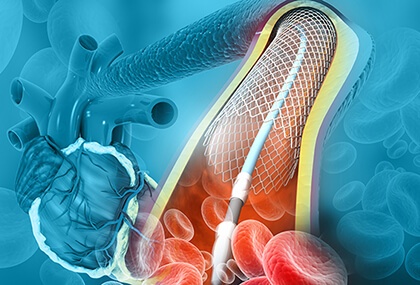The benefit of first-generation Drug-Eluting Stents (DES) over Bare Metal Stents (BMS) is largely known. Moreover, technological developments have led to reduced strut size, biodegradable polymers, and new scaffolds, which in turn have led to improved outcomes. These are known as ultrathin stents, and its struts measure between 70 and 100 microns, which contributes to reducing vascular injury, inflammation, thrombogenesis and myointimal hyperplasia.

At present, ultrathin stents (struts <70 micron) are being developed with biodegradable polymers. These will contribute to further reduce inflammation and thrombogenesis and improve evolution; however, even though we have been able to gather some data, their benefits are yet to be established.
For the present study, researchers looked at randomized controlled studies from PubMed, Embase and Cochrane Database comparing second generation stents against ultrathin stents, published between 2010 and 2020.
Primary end point (PFP) was target lesion failure (TLF) at 2 years, defined by the composite of cardiac death, target vessel myocardial infarction, and ischemia-driven target vessel revascularization. Secondary outcomes included TLF at 3 and 5 years.
18 publications were found to meet the requirements, with a total 14648 patients.
There were no differences between populations, except for the fact that the ultrathin group included older patients, with hypertension.
Read also: Is Coronary Revascularization Useful in Renal Transplant Candidates?
At 2 year followup, primary end point resulted in favor of ultrathin stents (RR, 0.88; 95% CI 0.78–0.99; p < 0.05) driven by target vessel myocardial infarction (RR, 0.80; 95% CI 0.67–0.96; p < 0.05) and target lesion revascularization (RR, 0.85; 95% CI 0.72–1.00; p = 0.05), with no differences in cardiac mortality.
After 3 years (7780 patients from 5 studies) secondary end point was in favor of ultrathin struts (RR, 0.81; 95% CI 0.67–0.99; p < 0.05) driven by reduced target vessel revascularization (RR, 0.79; 95% CI 0.64–0.98; p < 0.05), with no differences in cardiac mortality or target vessel myocardial infarction.
After 5 years, there were 2620 patients from 3 studies. Secondary end point was lower for ultrathin stents, though not statistically significant.
Read also: Ticagrelor Monotherapy after 3 Months: Is the Current Strategy Worth Changing?
There were no differences in definite or probable stent thrombosis at 2, 3 and 5 years, even though ultrathin struts were fewer.
Conclusion
In patients undergoing PCI, ultrathin DES improved evolution at long term followup.

Dr. Carlos Fava.
Member of the Editorial Board, SOLACI.org
Original Title: Long term outcomes of ultrathin versus standard thickness second-generation drug eluting stents: Meta-analysis of randomized trials.
Reference: Yasin Hussain, et al. Catheter Cardiovasc Interv 2022;19;91:–51623.–574.
Subscribe to our weekly newsletter
Get the latest scientific articles on interventional cardiology





